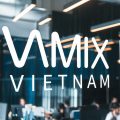Việc chuyển âm thanh thành văn bản trong công việc không chỉ đơn thuần là một công cụ hỗ trợ ghi chép.
Nó mang lại nhiều lợi ích thiết thực mà ít người ngờ tới, từ tiết kiệm thời gian cho đến nâng cao hiệu quả giao tiếp và quản lý dự án.
Những tác động này đang dần thay đổi cách thức làm việc truyền thống, mở ra nhiều cơ hội mới trong môi trường doanh nghiệp hiện đại.
Một trong những công nghệ tiên tiến giúp thực hiện việc này chính là vMixTrans AI – giải pháp sử dụng trí tuệ nhân tạo, giúp bạn giải phóng thời gian với dịch vụ gỡ băng, chuyển đổi file audio và video thành văn bản siêu tốc và chính xác.
vMixTrans AI tự động nhận diện người nói, thêm dấu câu và hỗ trợ hơn 90 ngôn ngữ.
Điều gì làm nên sức mạnh thực sự của công nghệ này?
Tìm hiểu thêm tại: https://vmixgpt.com/chuyen-file-am-thanh-thanh-van-ban-vmixtrans-ai/
Những điểm chính
- Tiết kiệm thời gian ghi chép và tăng hiệu quả công việc nhờ chuyển đổi nhanh chóng từ âm thanh sang văn bản.
- Cải thiện giao tiếp nội bộ và giảm thiểu hiểu lầm bằng cách cung cấp hồ sơ thảo luận rõ ràng, minh bạch.
- Dễ dàng lưu trữ, tìm kiếm và truy xuất dữ liệu nhờ văn bản có thể chỉ mục và tích hợp vào hệ thống quản lý.
- Nâng cao khả năng tiếp cận thông tin cho người khuyết tật, thúc đẩy môi trường làm việc bao trùm và bình đẳng.
- Tăng độ chính xác trong ghi nhận nội dung, giảm bỏ sót và hỗ trợ việc theo dõi, chia sẻ ý tưởng hiệu quả hơn.
Tiết kiệm thời gian ghi chép và xử lý thông tin

When audio recordings are transcribed to text, the process of note-taking and information management becomes greatly more efficient. Transcription eliminates the need for manual note-taking during meetings, interviews, or presentations, allowing participants to focus fully on the content. This reduction in multitasking leads to more accurate capture of information. Furthermore, text-based records are easier to organize, search, and retrieve compared to audio files. Users can quickly locate specific details without listening to entire recordings, markedly cutting down processing time. Transcriptions also facilitate faster dissemination of information, enabling team members to review content asynchronously at their convenience. In addition, text formats support integration with various digital tools for summarization, analysis, or archiving. Overall, transcribing audio to text streamlines workflows by accelerating access to critical information and minimizing time spent on documentation tasks, ultimately enhancing productivity and operational efficiency in professional environments.
Nâng cao hiệu quả giao tiếp trong nhóm làm việc
Although effective communication is fundamental to team success, misunderstandings and information gaps often hinder collaboration. Transcribing audio to text markedly enhances communication efficiency within teams by providing clear, accessible records of discussions. This practice guarantees that all team members receive consistent information, reducing the risk of misinterpretation or missed details. Text transcripts allow members to review and clarify points independently, fostering better understanding and informed decision-making. Additionally, written records facilitate asynchronous communication, enabling team members in different time zones or with varying schedules to stay aligned. The availability of transcripts supports transparency and accountability, as contributions and agreements are documented and easily referenced. Overall, converting spoken content into written form bridges communication gaps, strengthens coordination, and promotes a more cohesive work environment. This method ultimately leads to improved collaboration and productivity, as teams can address issues promptly and minimize repetitive explanations or follow-up meetings.
Dễ dàng lưu trữ và tra cứu dữ liệu âm thanh

Beyond improving communication, transcribing audio to text notably simplifies the storage and retrieval of audio data. Text files require considerably less storage space than audio recordings, enabling organizations to maintain extensive archives without excessive digital resource consumption. Furthermore, transcriptions can be indexed and searched quickly using keywords or phrases, allowing users to locate specific information within large volumes of content efficiently. This eliminates the need to listen through entire recordings, saving considerable time. Additionally, text formats are compatible with various document management systems, facilitating seamless integration into existing workflows. Transcribed data also supports better organization by enabling categorization and tagging based on content, date, or speaker, which enhances future accessibility. To summarize, converting audio into text transforms cumbersome audio archives into manageable, searchable databases, optimizing data handling and boosting overall work productivity.
Hỗ trợ truy cập nhanh chóng cho người khuyết tật
Providing quick access to information through audio transcription greatly benefits individuals with disabilities. For those with hearing impairments, having spoken content converted into text guarantees they can fully engage with audio materials, meetings, or training sessions without missing critical details. Additionally, people with cognitive disabilities may find it easier to process and understand written text compared to auditory information alone. Transcriptions also facilitate the use of assistive technologies such as screen readers, making content more accessible for users with visual impairments. By enabling faster and more flexible access to information, transcription supports inclusivity in the workplace, promoting equal opportunities for participation and contribution. This accessibility enhancement not only improves communication but also reduces dependence on others for information, fostering autonomy. Ultimately, the integration of audio-to-text technology serves as a practical tool to bridge gaps, guaranteeing that all employees can access essential content efficiently regardless of physical or sensory limitations.
Tăng cường độ chính xác trong việc ghi nhận nội dung cuộc họp

Accurate transcription of meeting audio greatly enhances the reliability of recorded content. By converting spoken words into precise written text, the risk of misinterpretation or omission is considerably reduced. This guarantees that all participants have access to an exact record of discussions, decisions, and action items. Additionally, transcriptions serve as an objective reference that can be revisited to clarify any uncertainties without relying on memory, which is often fallible.
In addition, automated transcription tools can capture nuances such as speaker identification and timestamps, further improving the clarity and organization of meeting records. This level of detail supports accountability and transparency within teams. Overall, the increased accuracy provided by audio-to-text conversion fosters better communication, minimizes disputes over what was said, and aids in effective follow-up, making it an indispensable asset in professional environments.
Thúc đẩy quá trình đào tạo và phát triển kỹ năng
Enhancing the training process and skill development is greatly supported by transcribing audio content into text. Transcriptions transform spoken lessons, workshops, or seminars into accessible written materials that trainees can review at their own pace. This facilitates better understanding and retention of information, especially for complex or detailed topics. Additionally, written transcripts serve as reference documents, allowing learners to revisit specific points without relying on memory or replaying lengthy audio files.
Moreover, transcriptions enable trainers to analyze and refine their teaching methods by reviewing the exact language and communication patterns used. They also support personalized learning, as instructors can identify areas where individuals struggle based on their engagement with the text. Beyond individual benefits, transcribed materials can be integrated into broader educational platforms, ensuring consistency and scalability in training programs. Overall, converting audio to text streamlines skill development by making training content more accessible, reviewable, and adaptable to varied learning needs.
Tối ưu hóa quy trình làm việc và quản lý dự án

Building on how transcriptions support training, converting audio to text also streamlines workflows and project management. By transforming meetings, brainstorming sessions, and client calls into written records, teams can easily track decisions, assign tasks, and monitor progress. This reduces misunderstandings and guarantees accountability by providing a clear, accessible reference for all stakeholders. In addition, searchable transcripts enable quick retrieval of specific information, saving time otherwise spent reviewing lengthy recordings. Project managers can use transcriptions to document milestones, deadlines, and action items systematically, facilitating better coordination and resource allocation. Moreover, written records support transparency and enable remote or asynchronous collaboration, as team members can review updates at their convenience. Overall, integrating audio-to-text transcription optimizes operational efficiency by enhancing communication clarity, improving documentation accuracy, and accelerating project cycles, making it an invaluable tool in modern work environments.



